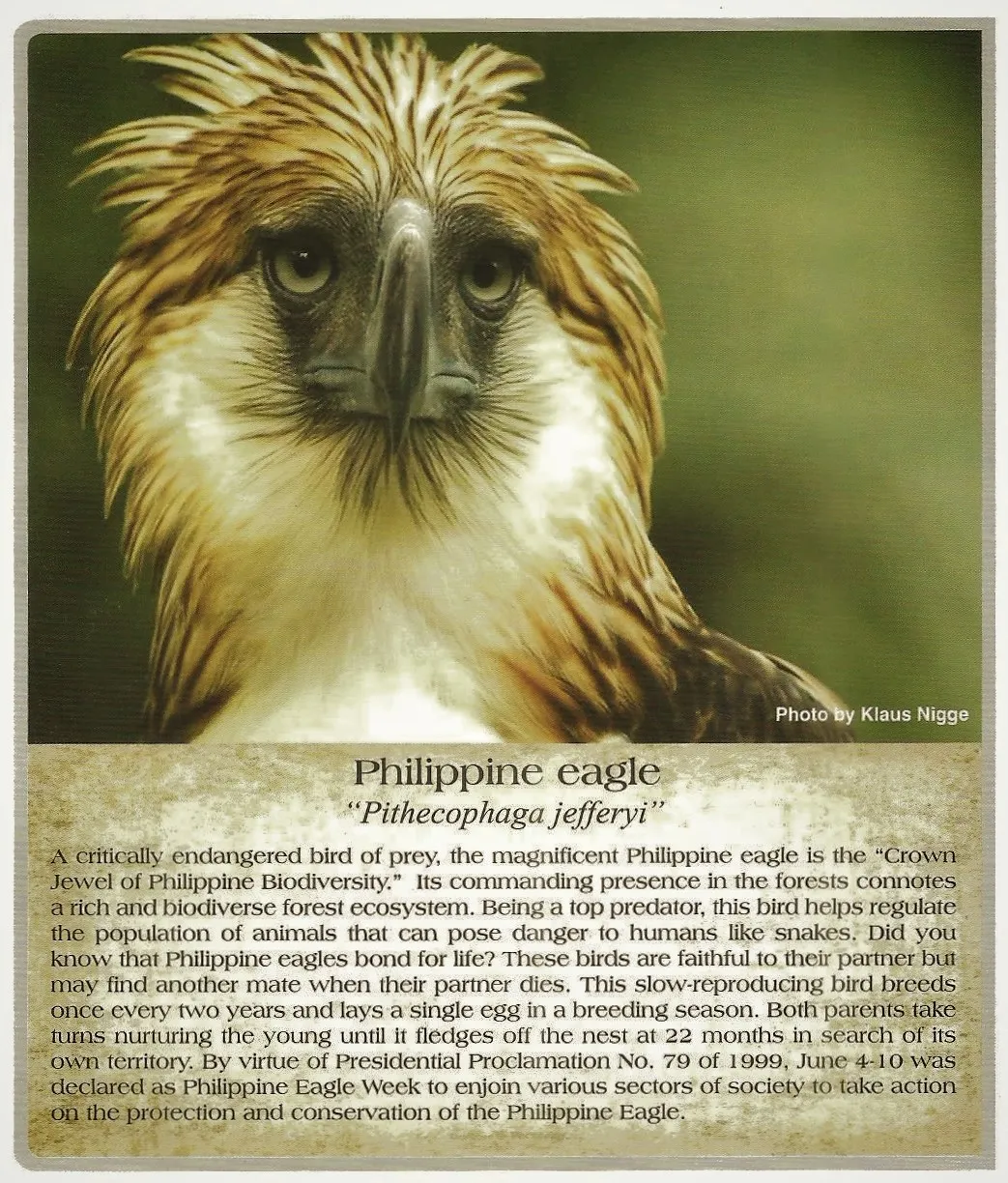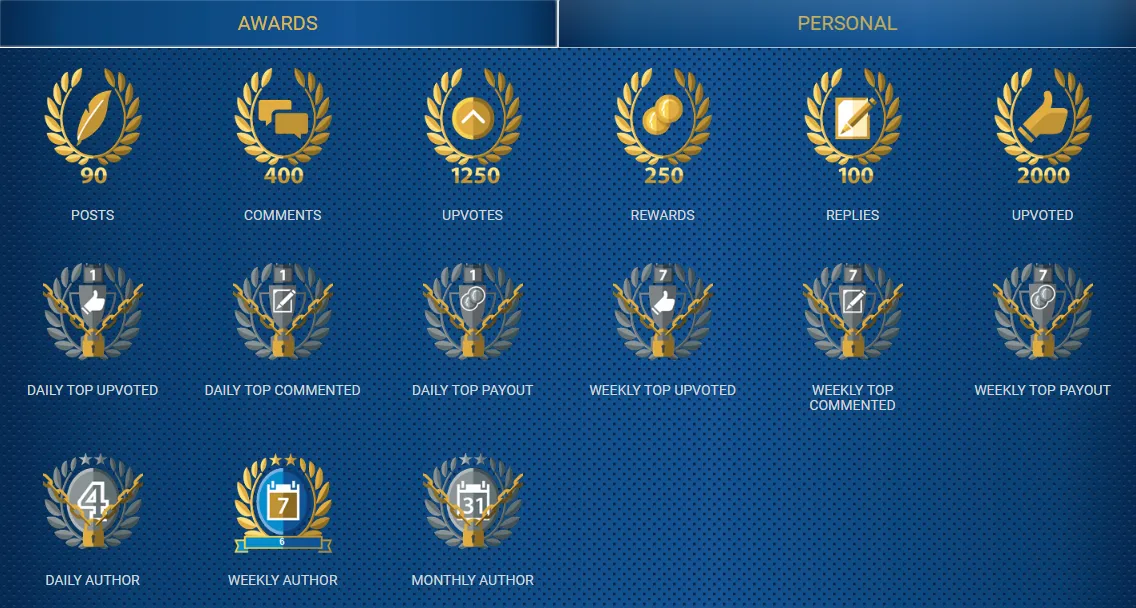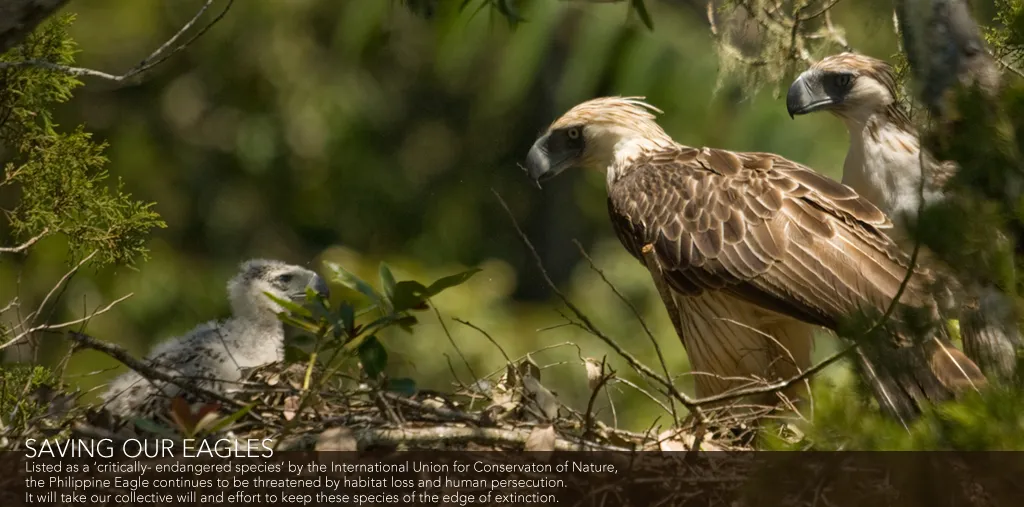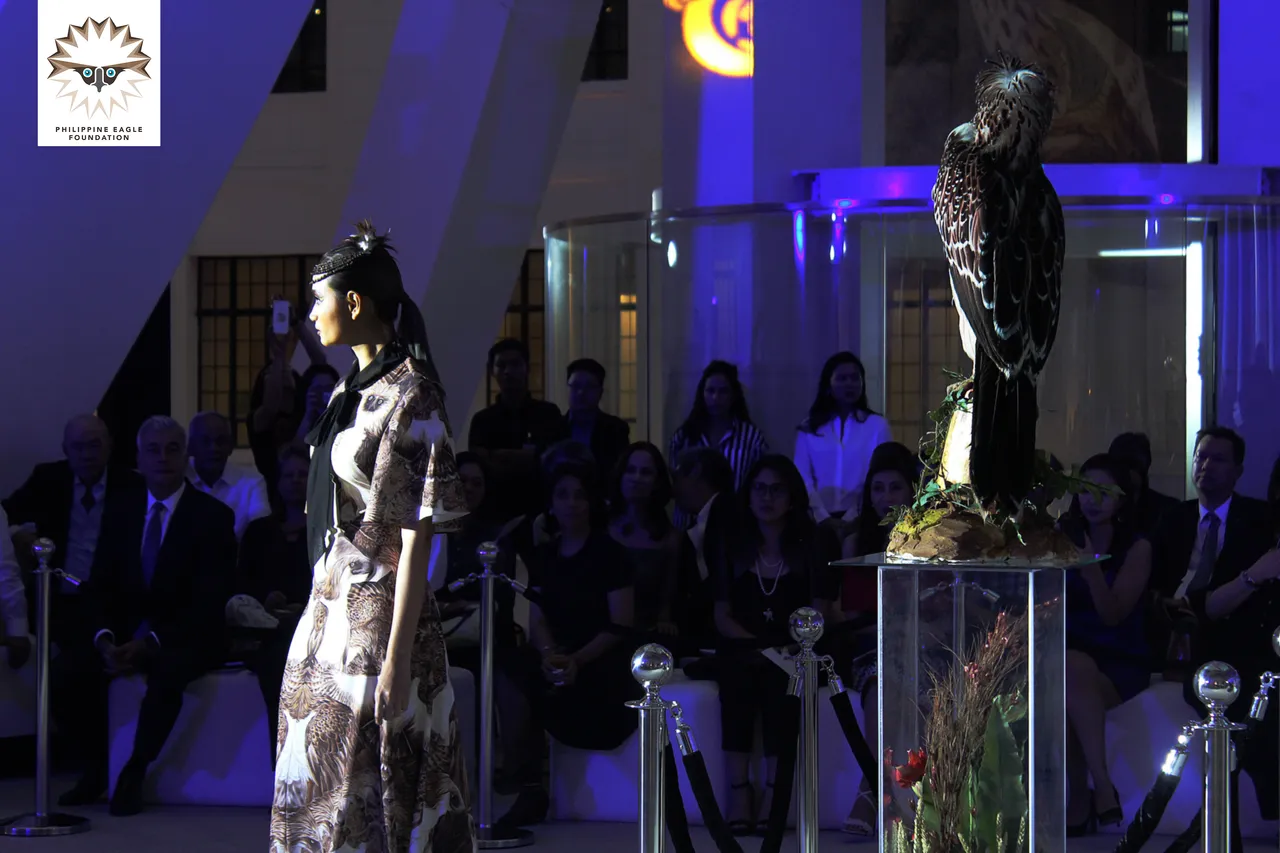I dedicate this post to the lovely Philippine eagle.

[All Images From the Philippine Eagle Foundation site: http://www.philippineeaglefoundation.org]
Endemic to the forests of the Philippines, this bird is but apt to be one of our national symbols. It is called the monkey-eating eagle since it is renowned for its excellent hunting skills. Once it has locked on to its target, the prey has very little chance of survival. We have plenty of good reasons to cherish this species. It is one of the rarest, most powerful birds in the world!
These massive eagles have a 6.5 foot or 2 meter wingspan and stand 3 feet or 1 meter tall. They weigh in at 16.5 pounds or 7.5 kgs but I should note these numbers are for the females who are larger than the males. Despite their extraordinary size, the Philippine Eagle has evolved to be able to fly out of dense jungle almost vertically with their broad wings and squared off tail.

[This photo, scanned from a Mercury Drug 2018 calendar, reminded me of the Philippine eagle today.]
It has been critically endangered and here are a few obvious reasons worth discussing:
Hunting
After World War I, long-range accurate weapons became much more common than before and though these eagles are on top of the food chain, humans, of course, have more control over their population. They’re considered prized trophies and their preserved bodies look really good on display. Excessive hunting has definitely played a role in the decline of their population.
In this Youtube video from ABS-CBN News, “Pamana" (Legacy) was released after three years in captivity. It was originally found injured with a gunshot wound and received medical attention. Despite three years of recovery, it was shot dead in Davao on August 16, 2015, just two months after being freed into the forest. Another specimen found dead was “Matatag” (found dead in February 2016 with a gunshot wound on its wings). The sobering reality is that they continue to get shot and killed despite the government’s efforts to protect them.
Environmental pollutants
Pesticides are generally not intended to kill birds. The problem is the disruption they cause in the ecosystem. Those on top of the food chain (like the Philippine eagle) may still ingest some toxin since they eat animals (like snakes) that eat other animals (like frogs) that eat insects (which are directly affected by pesticides). They not only have less food but may accumulate the toxins from the animals they eat.
Slow Reproduction
The breeding program in Davao City had 36 Philippine Eagles. 18 specimens were bred in captivity. Because they only lay 1-2 eggs per year, it took over 23 years for breeders to produce 26 eagles. 15 of them have been returned to the forests but a few were found injured and were brought back into the breeding facility. Only one is known to be surviving on its own. They are now being loaned out to other tropical countries for further breeding efforts to serve as a backup in case of natural calamities or spread of avian diseases.
There is Still Hope
"Pag-asa" (Hope), is the first successfully-bred and hatched Philippine eagle in captivity. He turned 25 this January. He was hatched at the Philippine Eagle Center in Malagos, Baguio District, Davao City on January 15, 1992. The Philippine Eagle Foundation continues to receive help from companies and individuals in order to acquire facilities that can be helpful in breeding more Philippine eagles. They continue to hold exhibits and conservation efforts.
The Philippine Eagle Week is off to a great start in Butuan City! Catch our Exhibit at Robinsons Place Butuan 1F, Activity Center and learn more about our National Bird.
Last April 17, 2018, the Philippine Eagle Foundation celebrated its 31st Anniversary. They featured a multi-awarded designer John Herrera and his 'Agila' ('Eagle') Collection at the National Museum of Natural History, Manila. They showcased the Philippine Eagle Center's master plan of the new expansion program. The goal is to improve the facilities and invite more people to visit the Center, which is currently home to 32 Philippine Eagles in Davao City.
As a part of the fundraising initiative, 10 pairs of Philippine Eagle Stuffed toys were dressed by John Herrera to be sold at the event. Currently, only 5 pairs remain for selling.
Thanks for reading/viewing!
[Credits to the Author of Life]
Please consider casting your votes for the following witnesses: @curie, @surpassinggoogle, @steemgigs, @precise, @cloh76.witness, @ausbitbank, @teamsteem, @gmuxx, @hiroyamagishi, @elizahfhaye, @bayanihan, @papa-pepper, @steemph, @daveks, @jerrybanfield, @teardrops, @donkeypong, @davidpakman, @minnowsupport, @themarkymark, @blocktrades and @sndbox who have been adding invaluable contribution to the community.
To cast your votes, just go to
https://steemit.com/~witnesses


Please stay tuned for my favorite photos and the lessons I learned behind the scenes.



